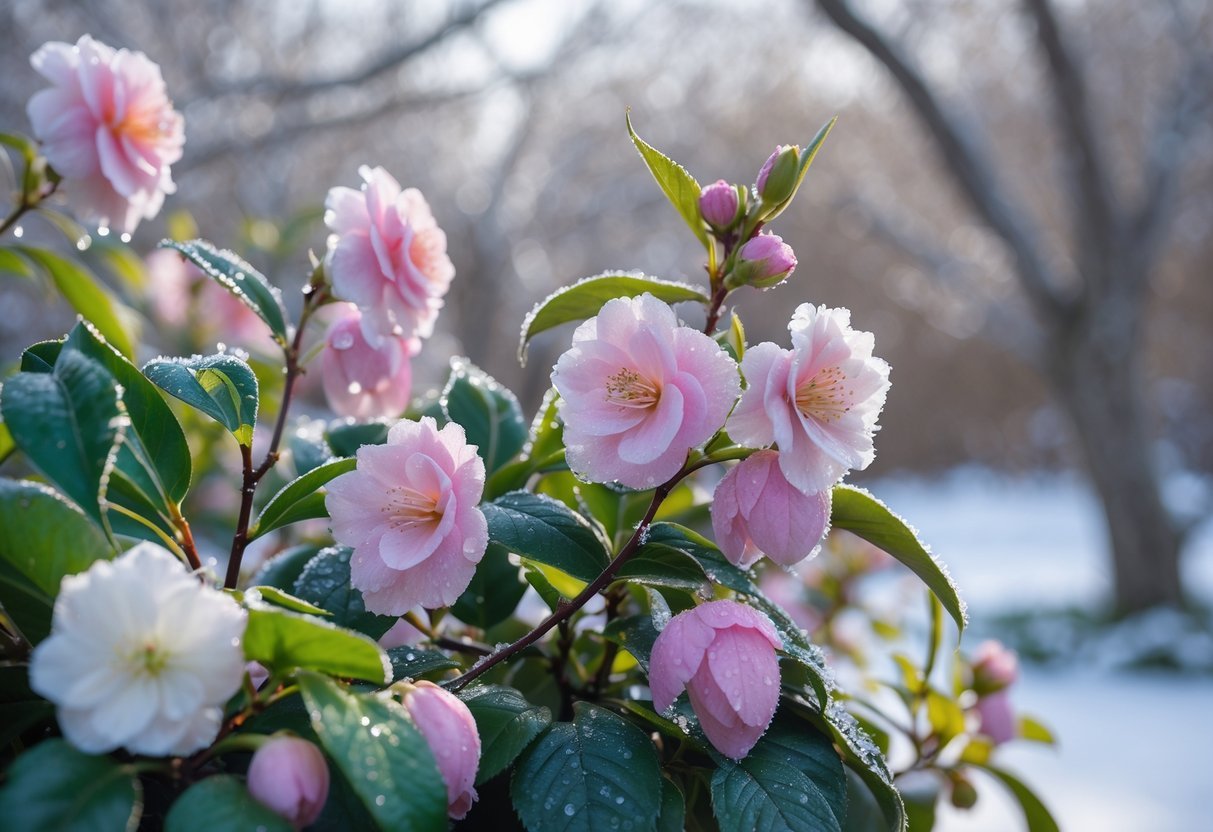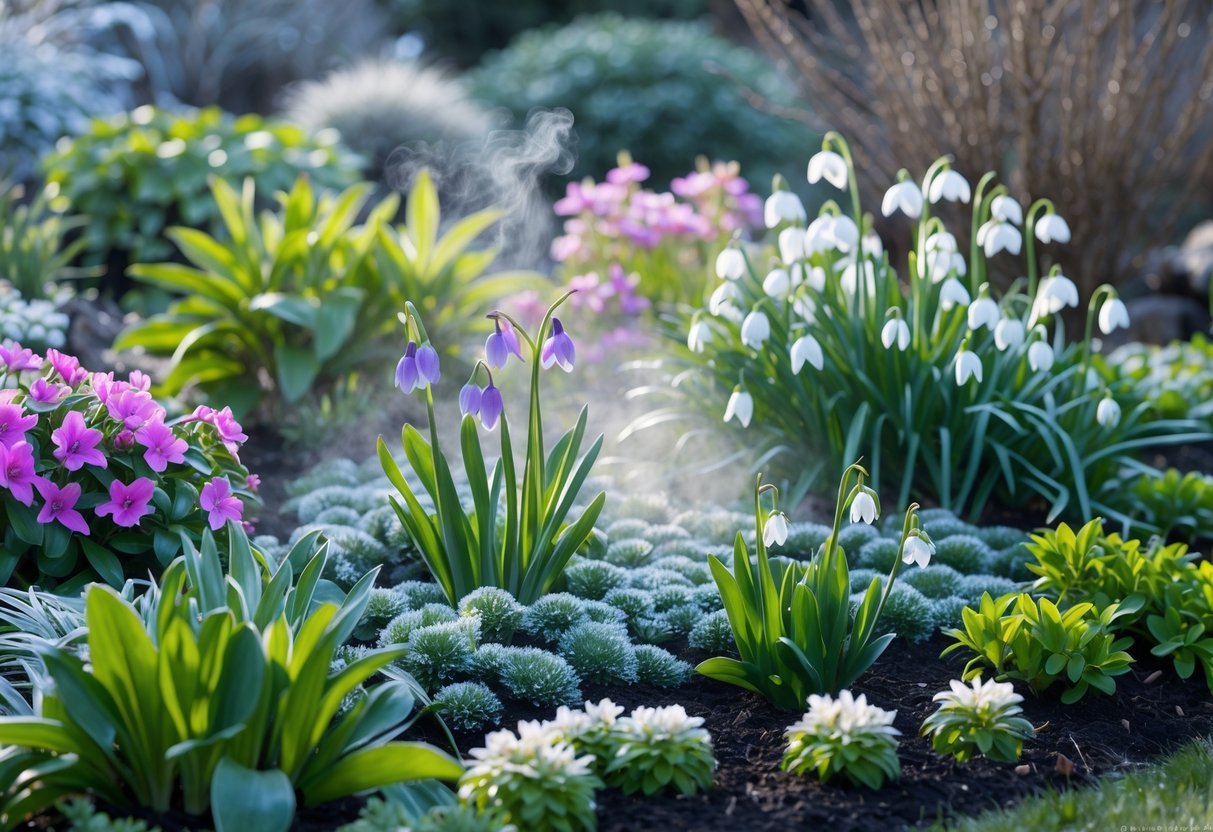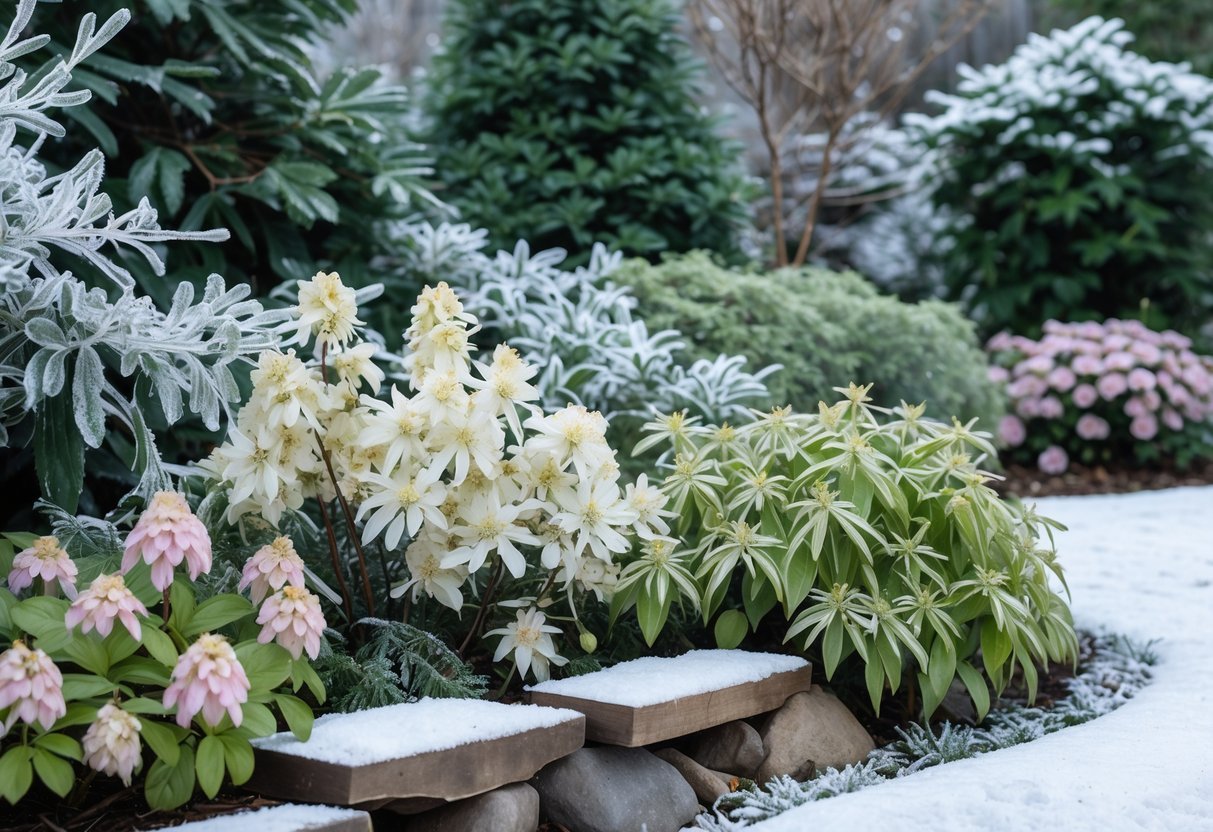Winter gardens often lack vibrant colors and scents, but certain plants bloom during the cold months, bringing both fragrance and visual interest to outdoor spaces. These plants provide a way to enjoy pleasing aromas even when most flowers have faded.

Fragrant winter-blooming plants include shrubs such as Winter Daphne, Winter Honeysuckle, and Wintersweet, which produce notable scents despite cold conditions. Their flowers often thrive in sun or partial shade, filling the garden with fresh aromas when few other plants are flowering.
Selecting the right fragrant plants for winter can transform a garden into a more inviting and lively space throughout the season. These blooms not only add beauty but also create a sensory experience that counters the typically sparse winter landscape.
Top Fragrant Plants That Bloom in Winter
Certain shrubs and plants offer reliable winter blooms with strong fragrance, enhancing gardens when few other plants flower. These species combine cold tolerance with physical beauty and pleasant scent, making them valuable in colder months.
Daphne and Its Varieties
Daphne, especially Daphne odora, is prized for its intensely fragrant flowers that bloom in mid to late winter. This evergreen shrub produces clusters of pale pink to white blossoms with a powerful sweet scent noticeable even in cold air.
Winter Daphne thrives in USDA zones 7-9 and prefers well-drained soil in partial sun to light shade. It is sensitive to overwatering but tolerates temperatures as low as 10°F. Its dark green, glossy leaves provide year-round interest, and the plant’s scent often intensifies on sunny days.
Witch Hazel and Winter Hazels
Witch hazels bloom from late fall through winter, making them some of the earliest fragrance sources in cold weather. Their spidery, ribbon-like flowers appear in yellow, orange, or red hues and release a spicy citrus scent.
This group includes species like Hamamelis virginiana and hybrid forms that handle temperatures well below freezing. Witch hazels prefer full sun to partial shade and moist, acidic soil. Their fall-to-winter blooming window supports pollinators and adds color and aroma when most plants are dormant.
Edgeworthia (Chinese Paperbush)
Edgeworthia chrysantha, known as Chinese Paperbush, is an upright shrub with highly fragrant, tubular yellow flowers appearing in late winter. The scent is rich and sweet, often described as jasmine-like.
This plant prefers partial shade and fertile, well-drained soil. It grows well in USDA zones 7-10 and is valued for both its floral fragrance and striking flower clusters, which appear before its large, textured leaves emerge. Its bark was traditionally used in papermaking.
Sarcococca (Sweet Box and Sweetbox)
Sarcococca, or Sweet Box, is an evergreen groundcover or low shrub appreciated for its small, white, highly fragrant flowers in winter. The flowers emit a rich, vanilla-like scent, especially noticeable in shady garden spots.
It thrives in shade to partial shade and prefers moist, well-drained soils. Hardy across USDA zones 6-9, Sarcococca is low maintenance and a reliable winter bloomer. Its shiny, dark green leaves add visual interest beyond the blooming season.
Popular Winter-Blooming Shrubs and Perennials
Winter-blooming plants bring color and fragrance during colder months when most gardens are dormant. These shrubs and perennials provide reliable beauty and scent, often thriving in partial shade or full sun and requiring well-drained soil.
Camellias and Camellia Species
Camellias are evergreen shrubs valued for their glossy leaves and large, showy flowers that often bloom from late fall through winter. They thrive in USDA zones 7-9 and prefer acidic, well-drained soil with partial shade.
Flower colors range from white and pink to deep red. Camellias are not only visually striking but also fragrant, particularly some species and hybrids. They require protection from harsh winter winds but provide consistent blooms through cold spells.
Hellebores, Christmas Rose, and Lenten Rose
Hellebores, including the Christmas Rose and Lenten Rose, are perennial plants that flower in winter or early spring. They grow best in shaded or semi-shaded areas with fertile, well-draining soil.
The Christmas Rose (Helleborus niger) blooms around December and carries subtle floral scents. Lenten Roses (various Helleborus species) flower slightly later with colors ranging from white and green to deep purples. Both types endure frost well and add delicate beauty and light fragrance to winter gardens.
Winter Jasmine and Winter Honeysuckle
Winter Jasmine (Jasminum nudiflorum) is a deciduous shrub known for bright yellow blooms appearing on bare stems in late winter. It prefers full sun to partial shade and well-drained soil. Although not highly fragrant, its vibrant flowers offer visual interest during dull months.
Winter Honeysuckle (Lonicera fragrantissima) is prized for its strong, sweet fragrance and creamy white flowers. It blooms in late winter and tolerates various light conditions. Its scent enhances gardens where winter fragrance is a priority.
Mahonia, Winterberry, and Pieris
Mahonia is an evergreen shrub producing yellow, fragrant flowers in winter, followed by blue berries. It grows well in shade or partial shade and acidic soils. Its spiny leaves add texture year-round.
Winterberry (Ilex verticillata) is a deciduous holly prized for its bright red berries rather than flowers. It requires female and male plants for berry production and thrives in wet or average soils.
Pieris is an evergreen shrub with clusters of small, bell-shaped, often fragrant flowers in early spring. It prefers acidic, well-drained soil and partial shade, contributing both scent and structural interest during winter and early spring.
Annuals, Bulbs, and Groundcovers for Scented Winter Color

Winter flowering plants can provide vibrant color and fragrance in colder months when many gardens are dormant. Some bulbs, annuals, and groundcovers stand out for their scent and resilience in chilly conditions, offering sensory interest and visual appeal despite low temperatures.
Snowdrops, Crocus, and Scilla
Snowdrops (Galanthus) are among the earliest bloomers, often flowering through snow. Their delicate white flowers have a subtle, fresh scent. Snowdrops prefer partial shade and moist, well-drained soil.
Crocus appears in early to mid-winter, with a range of colors from purple to yellow. While some crocus varieties have little scent, others can offer a light, sweet fragrance. Crocus prefers full sun to partial shade and well-drained soil.
Scilla, also called Siberian squill, produces blue or purple star-shaped flowers. It thrives in sun or part shade and can naturalize well, spreading to create carpet-like effects with gentle fragrance noticeable close up.
Cyclamen, Primrose, and Violas
Hardy cyclamen blooms in winter, often in shades of pink, white, or red. It favors shaded, well-draining spots and produces a subtle, sweet scent appreciated in enclosed garden spaces.
Primroses bloom in winter and early spring, showing vivid colors from yellow to purple. The flowers have a mild scent and prefer partial shade with moist, rich soil.
Violas, including pansy relatives, provide color through colder months. Their sweet, sometimes spicy fragrance varies by variety. Violas thrive in sun or part shade and require good soil drainage to stay healthy in winter.
Pansies and Calendula
Pansies, closely related to violas, are winter-tough annuals with bright, colorful blooms. Certain pansy varieties emit a soft, sweet fragrance, contributing to winter scent gardens. They grow best in full sun to partial shade.
Calendula produces daisy-like flowers in shades of orange and yellow, blooming late fall into winter in mild climates. Its petals have a faint, herbal scent. Calendula prefers full sun and well-drained soil, making it a good choice to add winter color and light fragrance.
Glory of the Snow, Winter Aconite, and Iris unguicularis
Glory of the snow (Chionodoxa) offers bright blue flowers early in winter, though the scent is mild or absent. It grows well in sun or light shade and naturalizes rapidly.
Winter aconite displays cheerful yellow cup-shaped flowers under early winter shrubs. The plant has no strong fragrance but provides important early color.
Iris unguicularis, the winter-flowering iris, blooms mid to late winter with lavender to purple flowers and a strong, sweet scent. It prefers sunny locations with well-drained soil and stands out for its reliable fragrance and ornamental value in a winter garden.
Design Considerations and Care for Winter Fragrant Gardens

Creating a winter garden with fragrant plants requires thoughtful choices about soil, light, and plant support. Attention to these factors ensures blooms despite cold temperatures and maximizes scent impact. Proper care helps maintain plant health through dormant seasons.
Soil Requirements and Well-Drained Soil
Winter fragrant plants generally thrive in well-drained soils to avoid root rot caused by standing water. Evergreen shrubs like winter daphne prefer slightly acidic soils with good organic matter to retain moisture without becoming waterlogged. Woodland garden soils, often rich in leaf mold and humus, provide ideal conditions for species like winter heath (Erica) and heather.
Avoid heavy clay soils, which can suffocate roots. Adding sand or fine gravel can improve drainage, especially in colder climates where freezing and thawing cycles occur. Mulching around the base helps maintain consistent moisture and protects roots from temperature swings.
Lighting and Garden Placement
Winter bloomers usually need full to partial sunlight to flower well. Placing evergreen shrubs such as camellias or winter daphne where they receive morning sun intensified by reflective winter light encourages extended blooming periods.
A south-facing position reduces frost exposure and captures low-angle winter sun, which benefits plants like sweet alyssum. In woodland gardens, dappled light mimics natural conditions for heathers and winter heath. Avoiding windy spots prevents damage to fragile blooms and helps maintain scent dispersion.
Supporting Early Pollinators
Winter gardens play an important role in supporting pollinators starting early in the year. Plants like winter heath and sweet alyssum offer vital nectar sources when few others bloom. Providing sheltered areas and clustering fragrant shrubs can create microhabitats favorable to bees and butterflies.
Incorporate evergreen shrubs alongside herbaceous winter bloomers to maintain continuous pollen availability. Avoid pesticides during bloom periods to protect pollinator populations. Plant diversity encourages a balanced ecosystem, which improves winter garden resilience.
Container and Indoor Winter Bloomers
For limited outdoor space or indoor enjoyment, winter-blooming plants such as Schlumbergera (Christmas cactus) and certain forced bulbs perform well in containers. Well-drained potting mix and proper watering prevent soggy roots, which can be fatal indoors.
Place containers near bright windows that receive indirect sunlight. Avoid drafts and sudden temperature changes to protect sensitive flowers. Incorporating kale and other ornamental winter greens in containers adds foliage interest alongside fragrant plants. Regular feeding with low-nitrogen fertilizer supports steady bloom production during short daylight months.




